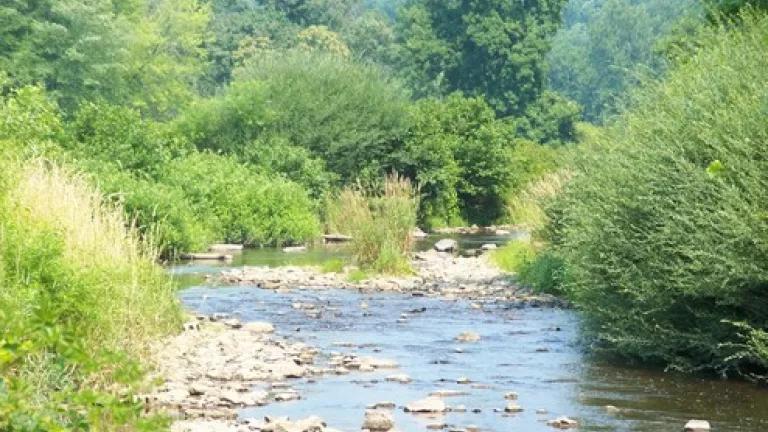
It's a good day. Today, Senator Russ Feingold and 23 additional Senators joined to introduce the Clean Water Restoration Act of 2009, a bill that would ensure that the Clean Water Act applies to protect a host of water bodies that previously were covered by the law but now may not be. In 2001 and 2006, Supreme Court issued decisions that have been interpreted to mean that the law - and its programs protecting the Nation's water bodies from unregulated industrial pollution, oil spills, and destruction by filling - might not apply to water bodies that are "isolated" from others, that are located far from "navigable" waterways, or that are dry for portions of the year. NRDC's fact sheet about this legal problem can be found here.
Scientists know that these legal distinctions ignore the critical functions that these resources serve. From replenishing drinking water supplies, to mitigating floods, purifying water, and supporting wildlife habitat, the same wetlands and streams that are at risk because of the Supreme Court's decisions also perform vital services for people and the environment.
Moreover, even perennial, but small, streams such as the one pictured below are not necessarily going to be protected going forward. At least one federal appeals court has said - in a case involving a permanently-flowing Alabama stream - that the government needs to show that a water body has a significant link to some downstream "navigable" one in order to enforce the Clean Water Act's pollution control programs for that water body. Doing so is time-consuming and resource-intensive.
Since the first Supreme Court decision in 2001, government agencies deemed an estimated 15,000 water bodies unprotected by the law. More are losing protection regularly, and the government's ability to enforce the law has been hamstrung by questions about what remains protected.
By clearly outlining what water bodies the law protects, Congress can ensure that the Clean Water Act once again will comprehensively guard against polluted rivers, lakes, and wetlands. And there's reason to hope that this year - finally - Congress will not only consider the Restoration Act, but it will become law; President Obama indicated on the campaign trail that he would support and sign legislation fixing this problem.
For the same reason, you can expect to hear all kinds of attacks launched against the bill. Opponents -- for whom complying with the Clean Water Act can require installing pollution control equipment, minimizing their discharge, or avoiding impacts to the water body altogether -- will squawk. They'll call it a "land grab"; they'll say it intrudes on states' rights; they'll claim it "expands" the Clean Water Act. Challenge these arguments:
- Ask them: do you support protecting the water bodies that had been protected before the 2001 decision? If they say "yes," then they need not worry - that is the express intent of the sponsors of this bill. Most likely, they will be forced to acknowledge that they want to weaken historic protections.
- Ask them: don't a lot of states support this bill? Last Congress, the Restoration Act was endorsed by 10 governors and a number of state agencies and associations of state officials.
- Ask them: what water bodies do you think you should get to pollute without Clean Water Act scrutiny?
So begins the vigorous debate on the Clean Water Restoration Act. Like I said, it's a good day.
